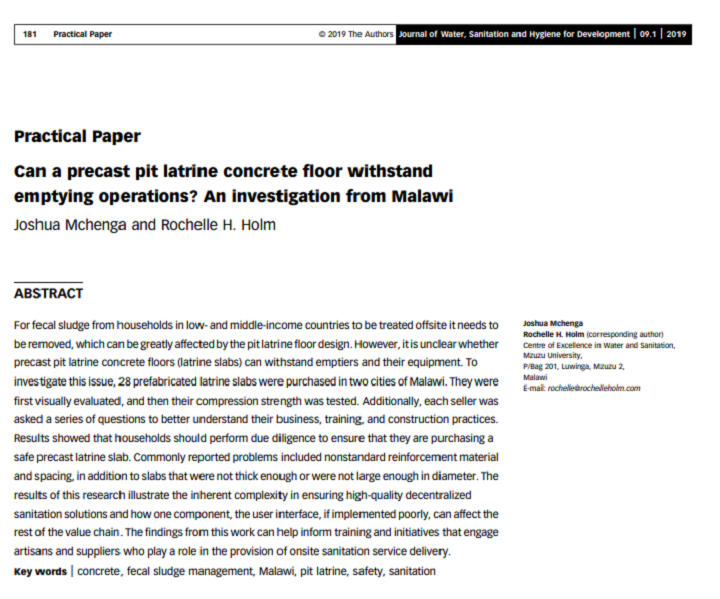Can a precast pit latrine concrete floor withstand emptying operations? An investigation from Malawi
Mchenga, J., Holm, R. H. (2019)

Published in: 2019
Pages: 6
Publisher:
Journal of Water, Sanitation and Hygiene for Development
Author:
Mchenga, J., Holm, R. H.
Uploaded by:
SuSanA Admin
Partner profile:
common upload
1882 Views
40 Downloads
Location of library entry
For fecal sludge from households in low- and middle-income countries to be treated offsite it needs to be removed, which can be greatly affected by the pit latrine floor design. However, it is unclear whether precast pit latrine concrete floors (latrine slabs) can withstand emptiers and their equipment. To investigate this issue, 28 prefabricated latrine slabs were purchased in two cities of Malawi. They were first visually evaluated, and then their compression strength was tested. Additionally, each seller was asked a series of questions to better understand their business, training, and construction practices.
Results showed that households should perform due diligence to ensure that they are purchasing a safe precast latrine slab. Commonly reported problems included nonstandard reinforcement material and spacing, in addition to slabs that were not thick enough or were not large enough in diameter. The results of this research illustrate the inherent complexity in ensuring high-quality decentralized sanitation solutions and how one component, the user interface, if implemented poorly, can affect the rest of the value chain. The findings from this work can help inform training and initiatives that engage artisans and suppliers who play a role in the provision of onsite sanitation service delivery
Bibliographic information
Mchenga, J., Holm, R. H. (2019). Can a precast pit latrine concrete floor withstand emptying operations? An investigation from Malawi. Journal of Water, Sanitation and Hygiene for Development
Filter tags
Sub-Saharan Africa














